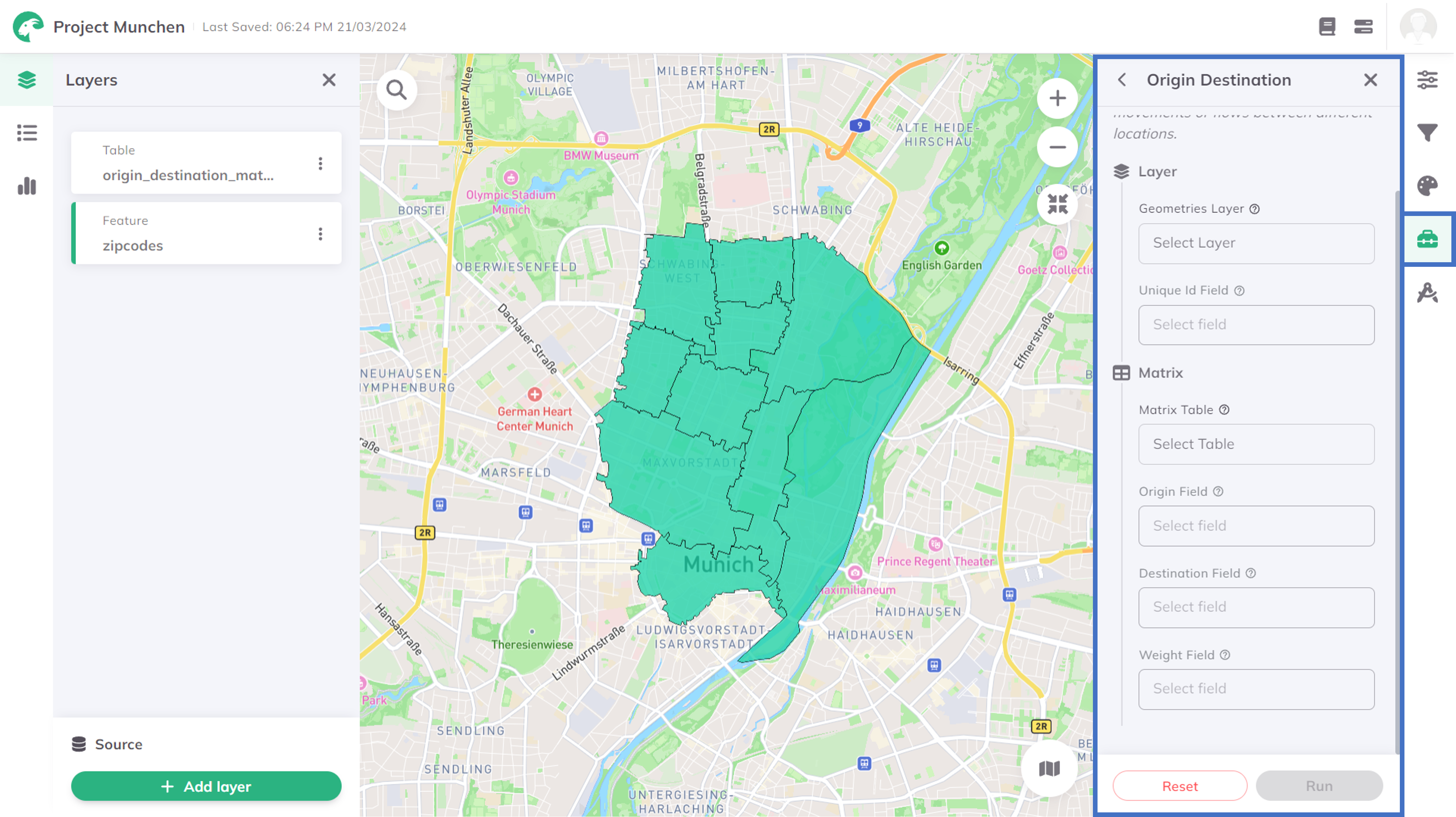Origin Destination
The Origin-Destination analysis is used in various fields such as transport planning and urban planning to study movements or flows between different locations.
1. Explanation
The Origin-Destination (OD) tool is suited for studying movement patterns between locations, such as commuter flows, providing insights into spatial interactions. This analytical process thereby visualizes the relationships between starting points (origins) and endpoints (destinations) by connecting them with a straight line. Such analyses help understand how and why movement occurs in different contexts and assist in the assessment and planning of transport networks and urban infrastructure. It supports data-driven decision-making by highlighting patterns and trends in spatial interactions, which can help improve the efficiency and sustainability of transport systems and urban layouts.
The example below shows an Input Table (Matrix Layer) and the resulting Origin-Destination Lines based on the Zipcode Areas (Geometry Layer).

2. Example use cases
- Visualizing the commuter flows between residential areas (origins) and workplaces (destinations).
- Assessing the public transport passenger flows between different stations.
- Analyzing the flow of people from residential areas (origins) to shopping locations (destinations).
3. How to use the tool?
Toolbox Geoanalysis menu, click on Origin Destination.
Layer
Geometries Layer (this should be a feature layer containing the geometries of the origins and destinations and an attribute that can be used as an identifier to match the OD-connections with the geometries) and Unique Id Field.Matrix
Matrix Table (the table with the origin-destination-matrix) and Origin Field.Destination Field (the field that contains the destinations in the origin-destination matrix).Weight Field (the field that contains the weights in the origin-destination matrix).Run.Depending on the complexity of the OD-matrix, the calculation might take some minutes. The status bar shows the current progress.
Results

Want to style your result layer and create nice-looking maps? See Styling.